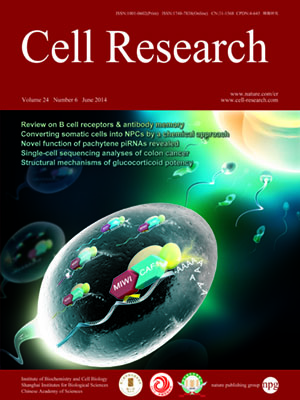
Volume 24, No 6, Jun 2014
ISSN: 1001-0602
EISSN: 1748-7838 2018
impact factor 17.848*
(Clarivate Analytics, 2019)
Volume 24 Issue 6, June 2014: 651-664 | Open Access
REVIEW
No receptor stands alone: IgG B-cell receptor intrinsic and extrinsic mechanisms contribute to antibody memory
Yinsheng Xu1,3,*, Liling Xu1,*, Meng Zhao1, ChenGuang Xu1, Yilin Fan1, Susan K Pierce2 and Wanli Liu1,3
1MOE Key Laboratory of Protein Science, School of Life Sciences, Tsinghua University, Beijing 100084, China
2Laboratory of Immunogenetics, National Institute of Allergy and Infectious Diseases, NIH, Rockville, MD 20852, USA
3Collaborative Innovation Center for Diagnosis and Treatment of Infectious Diseases, Tsinghua University, Beijing 100084, China
Correspondence: Susan K Pierce, Tel: 301-496-9589; Fax: 301-402-0259 E-mail: spierce@nih.gov; Wanli Liu, Tel: 86-10-6277-2730(liuwanli@biomed.tsinghua.edu.cn)
Acquired immunological memory is a striking phenomenon. A lethal epidemic sweeps through a naïve population, many die but those who survive are never “attacked twice ― never at least fatally”, as the historian Thucydides observed in 430 BCE. Antibody memory is critical for protection against many human infectious diseases and is the basis for nearly all current human vaccines. Antibody memory is encoded, in part, in isotype-switched immunoglobulin (Ig)G-expressing memory B cells that are generated in the primary response to antigen and give rise to rapid, high-affinity and high-titered antibody responses upon challenge with the same antigen. How IgG-B-cell receptors (BCRs) and antigen-induced IgG-BCR signaling contribute to memory antibody responses are not fully understood. In this review, we summarize exciting new advances that are revealing the cellular and molecular mechanisms at play in antibody memory and discuss how studies using different experimental approaches will help elucidate the complex phenomenon of B-cell memory.
10.1038/cr.2014.65
FULL TEXT | PDF
Browse 2068


